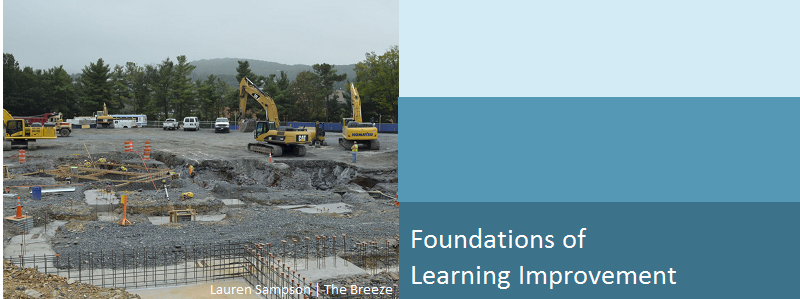
The purpose of the Learning Improvement by Design (LID) initiative is to create a culture of evidenced learning improvement at the academic program level. We endeavor to popularize this process at JMU and beyond: faculty target a program-level student learning outcome (SLO), collect baseline assessment data, develop and apply evidence-based curricular/pedagogical changes, and re-assess to demonstrate learning improvement. The "closing the loop" concept is not new, but few programs in the United States have systematically demonstrated such improvement. By supporting the LID project, we strive to achieve demonstrable student learning in academic degree programs and demonstrable faculty development (as teacher-scholars, sense of belonging to the institutional community, motivation and efficacy, etc.).
We believe that when the efforts of program faculty, faculty development experts, and assessment practitioners are intentionally integrated, academic programs are able to evidence student learning improvement. Success is thought to be contingent upon the following criteria:
- Faculty participation, investment, initiation, and buy-in: a strong faculty agent of change, cultural adoption of the learning improvement initiative, and sustained participation/investment.
- Administrative support: strategic resources, guidance, and consultation along the way.
- Identification of a program level learning objective: what should be improved? What should students know, think, or be able to do? Why is it important that they do so?
- Investigation of the curriculum: what is being taught? What are students learning? Why aren't students meeting expectations?
- Collaboration of program faculty, assessment practitioners, and faculty development experts in order to:
- Develop assessment instruments before any intervention and collect baseline data; methodology meets professional testing and design standards to enable valid improvement inferences.
- Structure a space and time that enables faculty to strategize;
- Model options for evidence-based pedagogy and curriculum.
- Student input is incorporated throughout the process.

